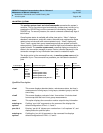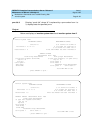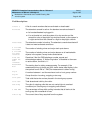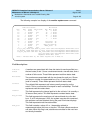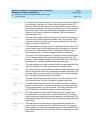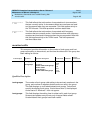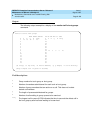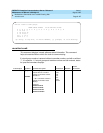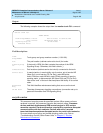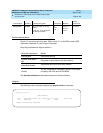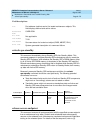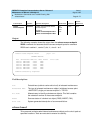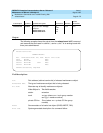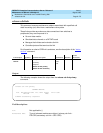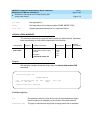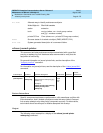
DEFINITY Enterprise Communications Server Release 6
Maintenance for R6vs/si
555-230-127
Issue 1
August 1997
Maintenance Commands and Trouble-Clearing Aids
Page 8-168recycle carrier
8
Output
The following example shows the output from the monitor trunk 78/1 command.
Field descriptions
recycle carrier
This command recycles power for specified carriers. When power units are
replaced in carriers, this command recycles that carrier’s power. Processor
carriers and their duplicates and EPN control carriers or SCC carriers
cannot be recycled. Carriers with active, recycled EIs, experience disrupted
communications with their cabinets. Carriers with active, recycled
tone-clock boards experience disrupted service for ports in port networks.
For more details on recycling and trouble shooting power units, refer to
“Troubleshooting Control Carrier Power Units” in Chapter 5, ‘‘
Routine
Maintenance Procedures’’.
Trunk
Group/Member
Trunk group and group member number. (1-99/1-99).
Port
The port location (cabinet-carrier-slot-circuit) for trunks.
Signaling Group
ID
If the trunk is ISDN, this field contains the number of the ISDN
Signaling Group. Otherwise, this field is blank.( )
Connected Ports
Port locations (cabinet-carrier-slot-circuit) connected to the trunk.
Service State
In-service/active, in-service/idle, out-of-service, out-of-service-NE
(Near End), out-of-service-FE (Far End), maint-NE/active,
maint-FE/active, maint-NE/idle, maint-FE/idle, pending-in-service,
pending-maint, or disconnected. NE (Near End) and FE (Far End)
refer to the “end” of the trunk that has placed the facility in its current
state.
Maintenance
Busy
This field identifies maintenance testing that occurs on the trunk.
CA-TSC State
The state of temporary signaling connections. (connection set up to
pass call information over PRI signaling links).
monitor trunk 78/1
TRUNK STATUS
Trunk Group/Member: 078/001 Service State: in-service/idle
Port: 01C1505 Maintenance Busy? no
Signaling Group ID: CA-TSC State:
Connected Ports:



